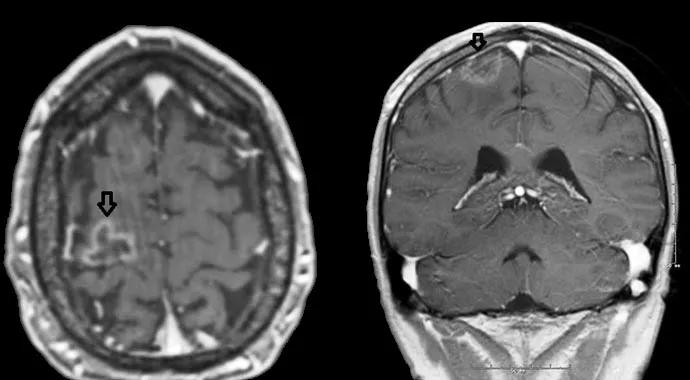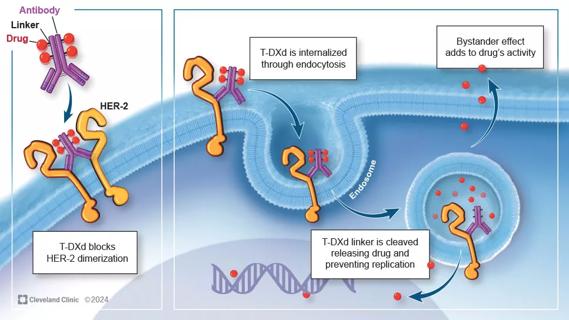Imaging findings correlate well with tumor progression, study shows

Follow-up imaging results after stereotactic radiosurgery for brain metastasis correlate well with long-term outcomes and should be taken into account when formulating patient management, according to Cleveland Clinic researchers who conducted the largest study to date on this issue.
Advertisement
Cleveland Clinic is a non-profit academic medical center. Advertising on our site helps support our mission. We do not endorse non-Cleveland Clinic products or services. Policy
Findings of the retrospective study were presented by senior investigator Alireza M. Mohammadi, MD, of Cleveland Clinic’s Rose Ella Burkhardt Brain Tumor and Neuro-Oncology Center, at the 2017 scientific meeting of the American Association of Neurological Surgeons. The investigators are currently submitting their findings to a peer-reviewed journal for full-length publication.
“This study provides strong evidence to support predictions of a patient’s prognosis based on radiographic evidence,” says Dr. Mohammadi.
Brain metastasis is the most common brain tumor in adults, leading to significant morbidity and mortality in patients with systemic malignancies. Median survival typically ranges from approximately 6 months to 15 months.
Local progression of brain metastasis following stereotactic radiosurgery occurs in 10 to 20 percent of cases, but no standard guidelines exist on following patients after stereotactic radiosurgery. Imaging studies are usually conducted after two months to check on tumor progression, then every three months thereafter. But until now, evidence on the significance of the findings — whether tumors have apparently resolved, enlarged or stayed the same — has been scant.
“We generally regard it as good news if the tumor at least does not enlarge, but we haven’t known whether this is truly the case,” explains Dr. Mohammadi. “For example, does a reduced lesion result in a different prognosis than a stable lesion? Surgeons need a predictive rule for prognosis based on evidence.”
Advertisement
His team’s study reviewed clinical, imaging and radiosurgery data for 4,283 lesions from 1,427 patients who underwent Gamma Knife® radiosurgery at Cleveland Clinic from 2000 to 2012, with median follow-up of one year.
Local tumor progression was the primary end point and correlated to tumor-related variables. Radiographic response during follow-up was defined according to the Response Assessment in Neurology-Oncology (RANO) criteria, which categorize findings as indicating complete response, partial response, stable disease or progression. Final outcome was divided between long-term control (about 80 percent of cases) or failure due to tumor progression or radiation necrosis.
Cox proportional hazard modeling was conducted to account for factors known to influence prognosis, including tumor size and volume.
Radiographic responses at first follow-up MRI were classified as follows:
The analysis showed that complete resolution of brain metastasis on first follow-up MRI was predictive for local tumor control compared with partial resolution or stable disease (hazard ratio [HR] of complete vs. partial resolution = 2.15; P < .010), whereas radiographic progression of metastasis was highly predictive of local tumor progression compared with other responses (HR of radiographic progression vs. stable disease = 10.23; P < .001). Stable disease and partial response had similar intermediate prognostic values and did not statistically differ from each other.
Advertisement
Consistent with previously published studies, other factors predictive of local tumor progression on multivariable analysis included:
Based on their findings, the investigators developed a prognostic score of local progression incorporating multiple factors including the observed imaging response at first follow-up. The score was found to correlate well with the cumulative incidence of local tumor progression at overall follow-up and during the first 15 months of follow-up.
Dr. Mohammadi says this study, backed by a large data set, provides an important prediction tool for long-term tumor control after radiosurgery. He adds that physicians can now have greater confidence in recommendations at follow-up after stereotactic radiosurgery for metastatic brain tumors.
“We now have better answers for patients regarding what their follow-up imaging results mean,” he adds. “This information can be considered to formulate more appropriate management for these patients.”
Advertisement
Advertisement

First-of-its-kind research investigates the viability of standard screening to reduce the burden of late-stage cancer diagnoses

Global R&D efforts expanding first-line and relapse therapy options for patients

Study demonstrates ability to reduce patients’ reliance on phlebotomies to stabilize hematocrit levels

A case study on the value of access to novel therapies through clinical trials

Findings highlight an association between obesity and an increased incidence of moderate-severe disease

Cleveland Clinic Cancer Institute takes multi-faceted approach to increasing clinical trial access 23456

Key learnings from DESTINY trials

Overall survival in patients treated since 2008 is nearly 20% higher than in earlier patients